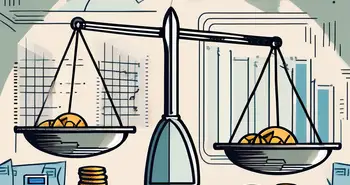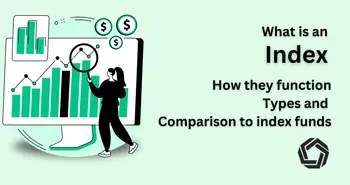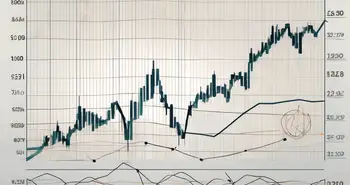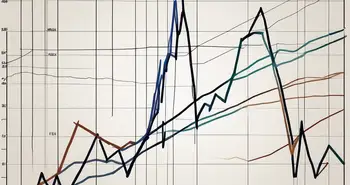Pips vs Ticks: Key Differences in Trading
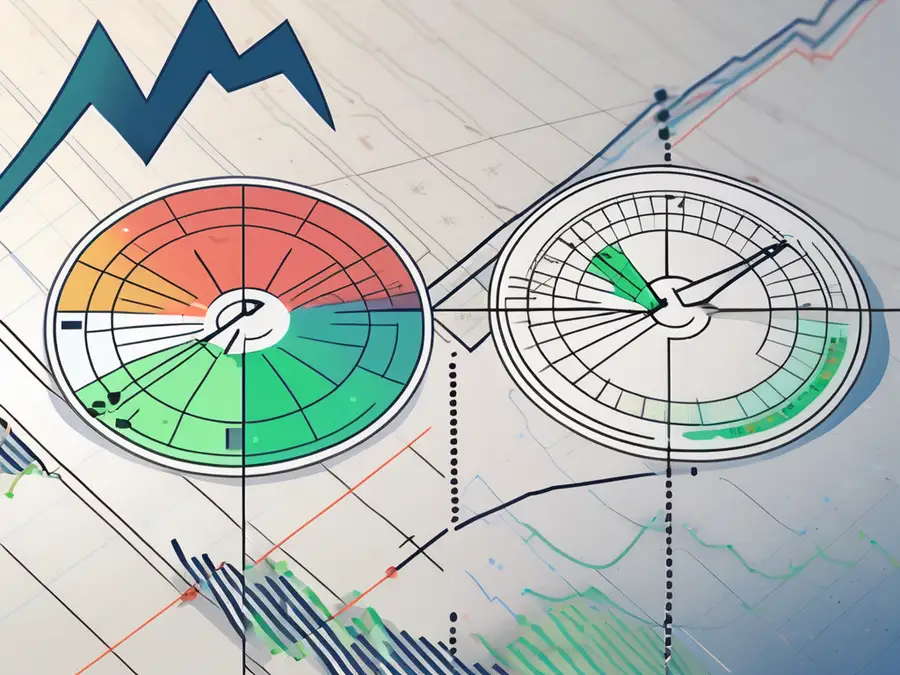
Understanding the world of trading can feel overwhelming at times, especially when it comes to terminology. Two of the most critical concepts in trading are “pips” and “ticks.” Both play a significant role in determining price movements and profitability, especially in forex and other financial markets. This article will delve into the definitions, importance, key differences, and practical applications of pips and ticks while addressing common misconceptions.
Defining the Basics: What are Pips and Ticks?
Before diving into their significance in trading, it’s essential to define what pips and ticks really are.
Understanding Pips in Forex Trading
A pip, or “percentage in point,” is the smallest price move in a currency pair based on market convention. For most currency pairs, a pip is typically the fourth decimal place (for example, 0.0001) in the exchange rate. For instance, if the EUR/USD currency pair moves from 1.1050 to 1.1051, it has moved one pip. Traders often use pips to measure price changes and profits in their trades.
To put this into perspective, consider if you bought one lot of EUR/USD at 1.1050 and sold it at 1.1070, you would have made a profit of 20 pips. Trading with pips allows for clearer communication and understanding of price movements among traders. Furthermore, the concept of pips is particularly advantageous for those who are new to forex trading, as it simplifies the complexities of currency fluctuations into a more manageable metric. By focusing on pips, traders can better gauge their risk and reward ratios, making informed decisions based on their trading strategies.
The Role of Ticks in Trading
Ticks represent the minimum price movement of a trading instrument and can vary based on the asset class. For example, in stock trading, a tick can equal a price movement of one cent, while in futures contracts, a tick could represent a smaller price change. Unlike pips, ticks are more related to the structure of the instrument itself rather than a standardized measurement across various markets.
For instance, if a stock trades at $100.00 and then moves to $100.01, it has moved one tick. Ticks are vital for day traders and scalpers who capitalize on small price fluctuations within a short time frame, allowing for rapid buying and selling. Moreover, understanding ticks is crucial for traders who employ high-frequency trading strategies, where the ability to react to minute price changes can lead to significant profits. In this fast-paced environment, even a single tick can be the difference between a winning and losing trade, emphasizing the importance of precision and speed in execution.
The Importance of Pips and Ticks in Trading
Pips and ticks play a crucial role in various trading strategies by influencing decisions and providing critical data regarding market movements.
How Pips and Ticks Influence Trading Decisions
Using pips, traders can set stop-loss and take-profit levels more effectively. For instance, if a trader enters a trade at a particular price, they can quickly determine how many pips away they feel comfortable placing their stop-loss. On the other hand, ticks allow for precise execution when trying to capture quick price movements. This precision is especially vital in fast-paced markets where every second counts, and a delay in execution can mean the difference between a profitable trade and a loss.
Understanding the movements in pips and ticks can ultimately shape a trader’s risk management strategy and establish a better potential for accuracy in trades. Moreover, the psychological aspect of trading cannot be overlooked; knowing that a trade is only a few pips away from a stop-loss can create anxiety, which may lead to hasty decisions. Thus, having a solid grasp of pips and ticks not only aids in technical analysis but also helps traders maintain emotional control during volatile market conditions.
The Impact of Pips and Ticks on Market Volatility
Pips often help traders gauge market volatility. When currency pairs show larger movements in pips over a period, it suggests heightened volatility, potentially indicating a good environment for trading. On the other hand, tick data can show how frequently price changes are occurring within a certain timeframe, which helps to identify trend strength. For instance, a high number of ticks in a short period may signal that a breakout is imminent, prompting traders to adjust their strategies accordingly.
For day traders, recognizing times of high volatility, as measured by pips or ticks, can be a decisive factor in timing their trades to maximize profitability. Additionally, understanding the correlation between pips, ticks, and economic indicators can further enhance trading strategies. Economic news releases often lead to spikes in volatility, and traders who can anticipate these movements based on historical pip and tick patterns may find themselves at a significant advantage, allowing them to capitalize on market inefficiencies before they correct themselves.
Key Differences Between Pips and Ticks
While both pips and ticks help in understanding price movements, there are distinct differences worth noting.
Value Differences: Pips vs Ticks
The primary difference lies in their value systems. A pip is a standard measurement within Forex trading, while a tick's value can differ from one market to another. For example, in Forex, the value of a pip is more significant regarding price calculations when making trades.
A stock trader might care more about ticks since stock movements could be tracked in a more granular way compared to pips, which emphasize larger price movements.
Pips and Ticks: Differences in Calculation
Calculating a pip and a tick can also vary markedly between markets. For instance, in Forex trading, the calculation is straightforward and standardized; a single pip usually corresponds to a set monetary value based upon the lot size of the trade.
Conversely, the calculation of ticks in stocks or futures can depend on multiple factors such as the trading instrument and market conditions, leading to more variability.
Utilizing Pips and Ticks in Trading Strategies
Incorporating a solid understanding of pips and ticks into trading strategies can significantly enhance performance.
Incorporating Pips in Forex Trading Strategies
Forex traders may look to measure movements in pips when setting trade entries, exits, and limits. A strategy known as “pips trading” focuses solely on the number of pips gained or lost. Traders might set both stop-loss and take-profit orders based on multiples of ten pips, looking to manipulate these based on their tolerance for risk and potential market movements.
By keeping a close eye on pip changes, Forex traders can adjust their strategies dynamically to align their trading volume and risk management effectively.
The Use of Ticks in Day Trading Strategies
Day traders primarily depend on ticks to make quick decisions in rapidly changing markets. For them, capturing small movements (ticks) can lead to daily profits. Strategies could involve high tick frequency instruments, focusing on exceptional execution often relying on technical indicators and intraday analysis.
For instance, recognizing patterns that develop during tick movements can help day traders fine-tune their entries and exits, optimizing their potential returns.
Common Misconceptions About Pips and Ticks
Despite their significance, there are some prevalent myths surrounding pips and ticks that deserve clarification.
Debunking Myths About Pips in Trading
One common misconception is that only professional traders utilize pips to gauge effectiveness in Forex trading. In reality, both novice and experienced traders use pips to measure profitability and craft strategies. Another myth is that maximum profit is always about large pip movements; however, even small pip gains can accumulate into substantial earnings if compounded over time.
Clearing Up Confusion Around Ticks in Trading
A frequent misunderstanding regarding ticks is that they apply exclusively to day trading. While ticks are integral to day trading due to the fast-paced nature of that market, they are equally relevant for swing traders and investors who wish to analyze stock price changes accurately. Recognizing tick movements can provide insights into overall market sentiment and lead to better-informed trading decisions.
FAQ
- What are pips and ticks in trading? Pips are standard units of measurement for currency pair changes, while ticks are the minimum price change of a trading instrument across different markets.
- How do pips and ticks affect my trading? Both help assess price movements and can guide your trading strategies, including entry and exit points.
- Can I trade effectively using only pips or only ticks? While it's possible to focus on one over the other, understanding both can provide a more comprehensive view of market movements.
- Are pips more important than ticks? It depends on the market you're trading. Pips are crucial for Forex, whereas ticks may be more significant in stocks and futures.
- How can I track pips and ticks? Most trading platforms automatically display pip and tick changes in real time, helping you stay informed.
Understanding the differences and applications of pips and ticks can significantly enhance your trading effectiveness. Whether you’re a novice looking to grasp the basics or an experienced trader honing your strategy, recognizing how each measurement fits into your trading plan is essential. Equip yourself with this knowledge, and you'll be better prepared for your trading journey.
Ready to take your trading to the next level with the insights on pips and ticks? Discover Morpher.com, the revolutionary trading platform that harnesses blockchain technology for a seamless, fee-free trading experience. Whether you're trading forex, stocks, or exploring new markets like NFTs and sneakers, Morpher offers infinite liquidity, fractional investing, and up to 10x leverage to enhance your trading strategies. Sign up now to gain control over your investments with the Morpher Wallet and receive your free sign-up bonus. Embrace the future of trading with Morpher and start your journey today.

Disclaimer: All investments involve risk, and the past performance of a security, industry, sector, market, financial product, trading strategy, or individual’s trading does not guarantee future results or returns. Investors are fully responsible for any investment decisions they make. Such decisions should be based solely on an evaluation of their financial circumstances, investment objectives, risk tolerance, and liquidity needs. This post does not constitute investment advice.

Painless trading for everyone
Hundreds of markets all in one place - Apple, Bitcoin, Gold, Watches, NFTs, Sneakers and so much more.

Painless trading for everyone
Hundreds of markets all in one place - Apple, Bitcoin, Gold, Watches, NFTs, Sneakers and so much more.

